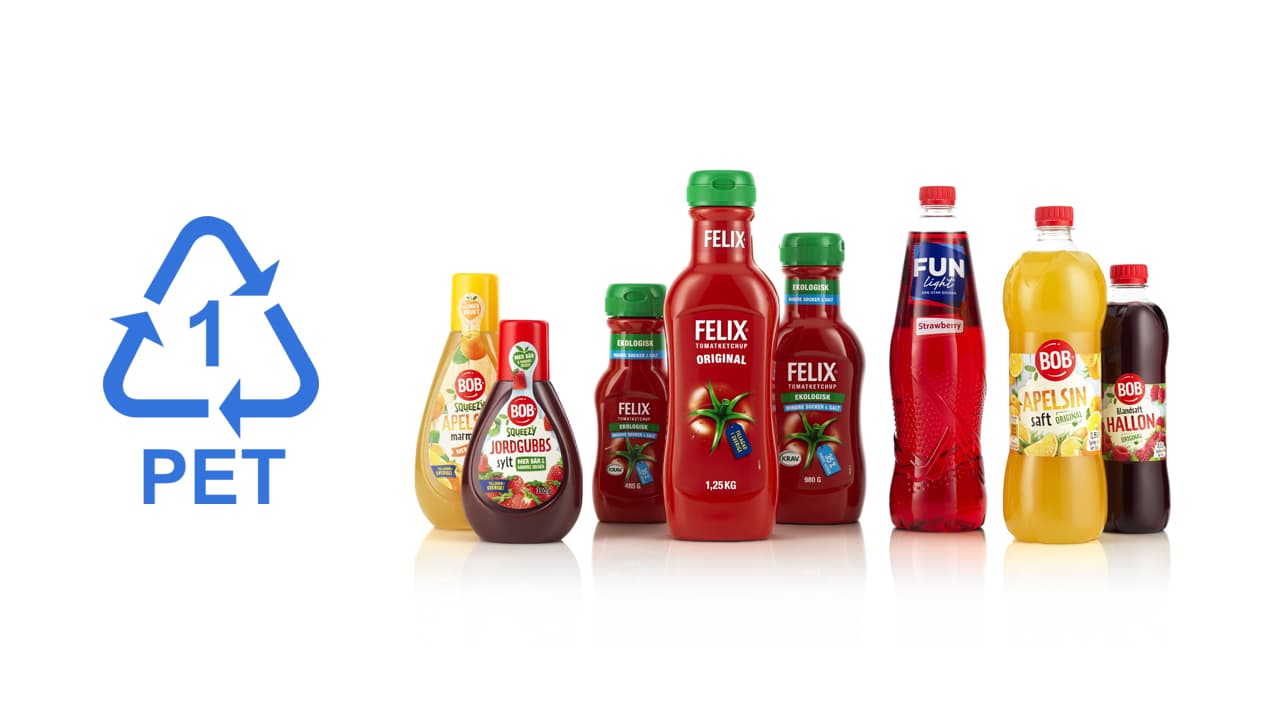
PET plastic—formally known as polyethylene terephthalate or PETE—is one of the most widely used packaging materials in the world. You’ll find it in everything from bottles and food containers to personal care products and beyond. Its unique balance of safety, durability, and sustainability makes it a standout option in modern manufacturing.
But what exactly is PET plastic? Is PET plastic safe? And how does it compare to other common plastics such as PVC, LDPE, PP, and PS? In this article, we’ll explore its key benefits, and show how it fits into a circular economy—all while highlighting why it remains the go-to choice for countless brands looking to reduce their carbon footprint without sacrificing performance.
PET plastic, or polyethylene terephthalate (also known as PETE), is a strong, stiff synthetic material that is part of the thermoplastics family. This means it can be heated, melted, and cooled into many shapes and sizes. Made from a combination of ethylene glycol and terephthalic acid, derived from petroleum and natural gas, PET is popular within the manufacturing sector for producing bottles and jars.
Almost every plastic bottle is made from PET. It's suitable for a range of beverages, including carbonated drinks, still and dilutable drinks, fruit juices, and bottled water.
Often dubbed the “safe plastic,” PET has been thoroughly tested and is used in countless food and beverage applications worldwide. Here are some of the key reasons why PET is considered one of the safest options on the market:
While many plastics serve different purposes, PET is unique in terms of recyclability, safety, and environmental impact. Here’s how it compares to PVC, LDPE, PP, and PS:
| Property | PET | Other Plastics (PVC, LDPE, PP, PS) |
|---|---|---|
| Recyclability | 100% recyclable; can be recycled multiple times | Often more challenging to recycle; may not be accepted in all recycling programs |
| Safety | BPA-free; non-reactive with food and beverages | Some may contain BPA or other harmful chemicals (e.g., PVC often contains phthalates) |
| Weight | Lightweight; reduces transportation emissions | Varies; some heavier plastics increase transportation impact |
| Clarity | High clarity; glass-like appearance | May be opaque or less transparent (e.g., PP and PS are typically opaque) |
| Applications | Beverage bottles, food containers, personal care | Cling film (LDPE), single-use bags (LDPE), food containers (PP), disposable cups and packaging (PS), pipes and fittings (PVC) |
| Environmental Impact | Lower carbon footprint; less energy during manufacturing | Higher carbon footprint; may require more energy to produce; some release toxins when burned or degrade slowly in landfills |
Conclusion: PET typically outperforms other plastic types in recyclability, safety, and carbon footprint.
Growing environmental awareness has highlighted the importance of choosing recyclable, low-impact materials. PET’s characteristics make it a top candidate for a circular economy, particularly for these reasons:
One of the most significant advantages of PET is its reusability through recycling. Here’s an overview of how PET completes its life cycle and reenters the supply chain as rPET:
PET plastic (polyethylene terephthalate) offers a compelling balance of safety, sustainability, and efficiency—making it the foremost choice for beverage bottles, food containers, and more. Its BPA-free status, high recyclability, and lightweight properties underscore its value in a market increasingly focused on environmental responsibility.
If you’re looking to reduce your carbon footprint while maintaining product quality and safety, PET plastic stands out from other plastic types. At Petainer, we’re proud to pioneer circular PET solutions—from bottles to kegs, preforms, and water coolers—ensuring our customers can package products responsibly without compromising on performance. Many of our products can be produced using 100% recycled content, eliminating virgin plastic and saving up to 75% in carbon emissions.
If you have any questions or would like to learn more about this topic, feel free to drop us an email. We're always here to help and provide further insights. Contact us to continue the conversation.
Choose sustainable, high-performance PET solutions designed to reduce waste, lower costs, and protect your products—all while supporting a circular economy. Start your journey today.
Get in touch